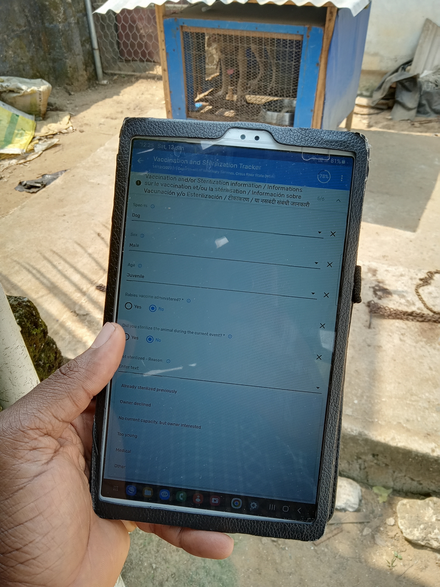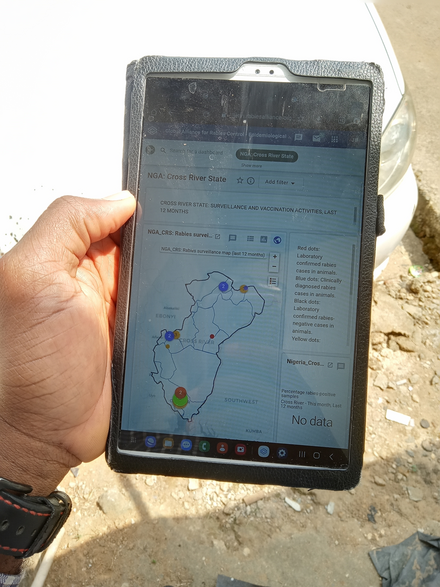Enhancing Rabies Surveillance in Cross River State through GARC’s Innovative educational and surveillance Tool
Rabies remains a significant public health concern, particularly in Nigeria’s Cross River State, where the disease is endemic. Cross River State has been proactive in addressing this issue, employing cutting-edge tools to enhance rabies surveillance. One such tool that has proven instrumental in this effort are the Global Alliance for Rabies Control (GARC) surveillance tools. These tools, alongside the GARC education courses and resources, have transformed rabies surveillance in Cross River State, providing an effective means of tracking bite cases, rabies incidents, and vaccination efforts with visual data representation. Furthermore, the GARC educational courses have equipped rabies surveillance agents in the field with the requisite knowledge to effectively manage rabies cases through a responsive approach. This ensures that communities are well enlightened about the dangers of the disease and the need to ensure responsible dog ownership and prompt vaccination of pets against the disease. This is evident in five of our surveillance agents becoming bronze dog health champions upon completion of the GARC REC and CCC courses.
The GARC Surveillance Tool:
The GARC surveillance tool, a comprehensive software solution designed to streamline and optimize the monitoring of rabies-related data in Cross River State, since adoption has helped bolster efforts in combating rabies effectively. The tool encompasses features for bite case reporting, rabies case tracking, and vacc

ination monitoring, creating a centralized system for data collection, analysis, and storage.
Effective Bite Case Tracking:
The GARC surveillance tool has also facilitated efficient bite case tracking. By providing a standardized and user-friendly platform for reporting and recording bite incidents, the tool ensures that crucial data is collected promptly. This has significantly improved the accuracy and timeliness of information related to potential rabies exposures, enabling rapid response and intervention measures.
Rabies Case Monitoring:
The GARC tool goes beyond bite case tracking by incorporating a robust system for monitoring suspected and confirmed rabies cases. This includes real-time data on clinically- and laboratory-diagnosed cases, their geographic distribution, and the progression of the disease. This valuable information has empowered veterinary officials to identify hotspots, allocate resources strategically, and implement targeted responses to curb the spread of rabies within the state. Since deploying the GARC app in the field, surveillance agents have tracked suspected outbreaks and have confirmed several cases.
Vaccination Spread Visualization:

In the past year, over 2,000 dogs have been vaccinated against rabies across the State. These vaccinations were recorded manually (on paper) and in some instances the records were lost in storage. But with the GARC app, we have been able to effectively collect vaccination data in real time, store and visually represent the spread of rabies vaccinations across the state. This has been one of the most impactful aspects of the GARC surveillance tool. Through interactive maps and graphs, the veterinary department gain insights into vaccination coverage, allowing them to identify areas with low immunization rates and implement targeted vaccination campaigns. This visualization feature not only aids in resource allocation but also enhances public awareness of the importance of rabies vaccination.
Conclusion:
The integration of the GARC surveillance tool in Cross River State, Nigeria, has marked a significant milestone in the fight against rabies. By providing a centralized and comprehensive platform for bite case reporting, rabies case tracking, and vaccination monitoring, the tool has revolutionized how the state manages and responds to this deadly disease. The visual data representation further enhances decision-making processes, ensuring that resources are deployed effectively. As Cross River State continues to harness the power of innovative tools like the GARC surveillance tool, support from Dr Grace Kia (coordinator at War Against Rabies) and the Nigerian Government (through World Bank funded projects like the Regional Disease Surveillance Systems Enhancement (REDISSE) Project) it is important to highlight the challenges and limitations to rabies elimination we have experienced. Community education and targeted mass vaccinations are especially challenging components that often lack sufficient government support, especially in places with a high disease burden. This makes mass vaccination within these communities all the more important to achieve a vaccination coverage necessary for rabies prevention and control. We hope to continuously engage relevant stakeholders with shared interest in rabies elimination on ways we can partner to achieve the global goal of rabies elimination by 2030.
Article contributed by: Dr John Bassey (Cross River State Rabies Surveillance)